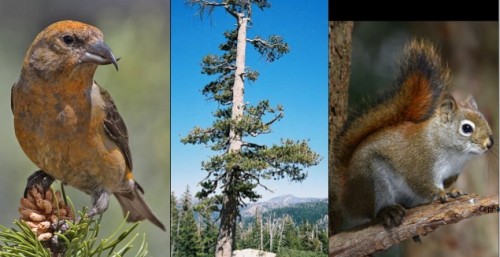Dec 222014
Interactions between species can lead to coevolution. Even the interactions we observe in our own back yards, be they predator-prey interactions, species competition, or mutualism, can lead to two species reciprocally affecting each other’s evolution. In this lesson, students will learn about species interactions that lead to evolutionary arms races, using coevolution between crossbills, lodgepole pines, and red squirrels as an example. The lesson includes an activity to illustrate coevolution in action and a graphing activity.
At the conclusion of the lesson, students will be able to:
- Define coevolution
- Identify and explain the types of species interactions that lead to coevolution
- Produce frequency distribution graphs that display coevolution between two species over time
Resources:
- Lesson plan
- Powerpoint
- Graphing activity worksheet
- Graphing/data recording spreadsheet (.xlsx)
- Spreadsheet instructions
Lesson Plan created by GK-12 Fellows Brendan O’Neill, Susan Magnoli, and Andy Booms, 2014

